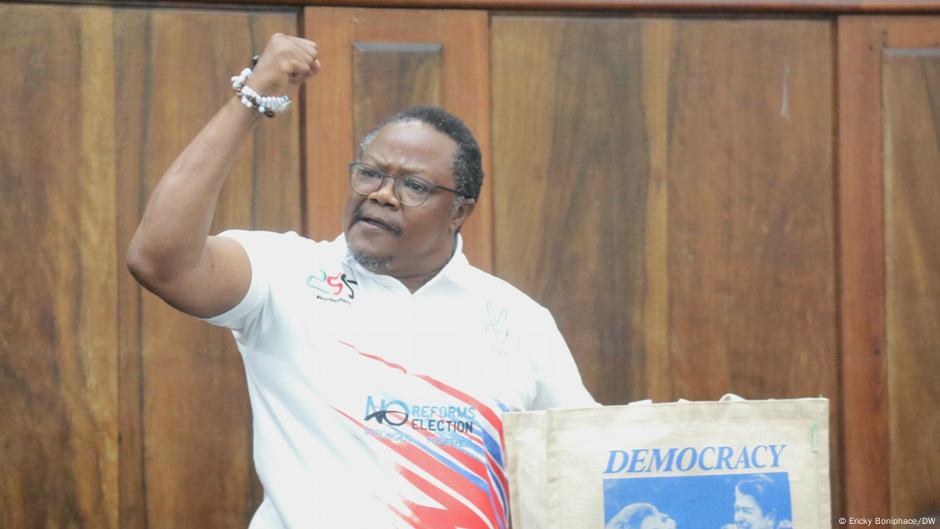Bulgaria: Socio-Economic and Financial Inclusion of Refugees in Bulgaria – AGD Participatory Assessment 2024 (July 2025) – ReliefWeb

Report on Refugee Status and Sustainable Development Goal Implications in Bulgaria
Institutional Response and Contributions to SDG 16 (Peace, Justice and Strong Institutions)
Bulgaria’s role as an external European Union border has necessitated a significant institutional response to large-scale displacement, directly engaging with the objectives of SDG 16 (Peace, Justice and Strong Institutions). The government’s actions, managed by bodies such as the State Agency for Refugees (SAR), demonstrate the functioning of national institutions in upholding international protection obligations.
- Since the conflict escalation in February 2022, Bulgarian institutions processed the admission of over 2.3 million refugees from Ukraine.
- By February 2025, the government had granted temporary protection status to more than 204,000 refugees from Ukraine.
- In 2024, the SAR registered 12,250 asylum seekers from other regions, a decrease from approximately 22,500 the previous year.
- Over the last decade, 55,385 Syrians have sought protection, with institutions granting international protection to 34,260 individuals, reflecting a long-term commitment to processing asylum claims.
Demographic Profile and Alignment with SDG 5 (Gender Equality)
The demographic composition of the refugee population highlights the critical importance of gender-responsive policies, a core target of SDG 5 (Gender Equality).
- The majority of the more than 204,000 refugees from Ukraine granted temporary protection are women and children. This demographic reality requires targeted support systems that address their specific vulnerabilities and needs, ensuring their safety, well-being, and empowerment.
Socio-Economic Integration Challenges and Relevance to SDG 1, SDG 8, and SDG 10
Despite institutional efforts, significant barriers to integration persist, impacting progress towards several key SDGs. The challenges faced by refugees in achieving self-sufficiency are directly linked to SDG 1 (No Poverty), SDG 8 (Decent Work and Economic Growth), and SDG 10 (Reduced Inequalities).
- Refugee populations, particularly those from Syria and Afghanistan, face persistent barriers to socio-economic inclusion.
- A lack of integration prospects and limited livelihood opportunities hinder the ability of refugees to secure decent work and escape poverty.
- These obstacles underscore the inequalities faced by vulnerable groups and the need for more effective policies to ensure their economic inclusion and reduce disparities, in line with the principles of SDG 10.
Population Dynamics and Pathways to Long-Term Inclusion (SDG 10 & SDG 11)
Analysis of population trends reveals dynamic shifts and diverse pathways toward settlement, which have direct implications for SDG 10 (Reduced Inequalities) and SDG 11 (Sustainable Cities and Communities).
- Increasing Residency: The number of Ukrainian refugees hosted under temporary protection in Bulgaria rose from 67,000 in 2022 to approximately 75,250 by February 2025, suggesting a growing number are opting for longer-term residence.
- Pathways to Citizenship: In a significant step towards reducing inequality and fostering inclusion, 2,579 temporary protection holders from Ukraine acquired Bulgarian nationality in 2024.
- Fluid Settlement Patterns: Refugees exhibit varied settlement outcomes, including transitioning to other forms of legal stay, moving onward to another EU country, or returning to Ukraine, highlighting the complexity of displacement.
- Community Sustainability: The increasing number of refugees choosing to remain in Bulgaria necessitates strategic planning for their integration into host communities, ensuring social cohesion and access to services, which is fundamental to achieving SDG 11.
1. Which SDGs are addressed or connected to the issues highlighted in the article?
-
SDG 10: Reduced Inequalities
- The article focuses on the management of large-scale refugee movements into Bulgaria from Ukraine, Syria, and Afghanistan. This directly relates to the international effort to manage migration and protect vulnerable populations, which is a core component of reducing inequalities between and within countries.
-
SDG 16: Peace, Justice and Strong Institutions
- The text details the legal and institutional responses of Bulgaria to the refugee crisis, including granting temporary protection, registering asylum seekers, and providing pathways to nationality. These actions are fundamental to providing legal identity and access to justice for displaced persons, which are key aspects of SDG 16.
-
SDG 8: Decent Work and Economic Growth
- The article explicitly mentions “persistent barriers to socio-economic inclusion and livelihood opportunities” for refugees, particularly those from Syria. This highlights the challenges refugees face in accessing the labor market and achieving economic self-sufficiency, connecting directly to the goal of promoting inclusive economic growth and decent work for all.
-
SDG 5: Gender Equality
- The article specifies that the “majority” of refugees from Ukraine are “women and children.” This underscores the gendered dimension of displacement and the specific vulnerabilities faced by women, making their protection and empowerment relevant to SDG 5.
2. What specific targets under those SDGs can be identified based on the article’s content?
-
SDG 10: Reduced Inequalities
- Target 10.7: “Facilitate orderly, safe, regular and responsible migration and mobility of people, including through the implementation of planned and well-managed migration policies.”
- The article describes Bulgaria’s role as an external EU border managing the influx of over 2.3 million refugees from Ukraine and processing asylum claims from other regions. The government’s actions, such as granting temporary protection and registering asylum seekers, are direct examples of implementing migration policies to manage the mobility of people fleeing conflict.
- Target 10.7: “Facilitate orderly, safe, regular and responsible migration and mobility of people, including through the implementation of planned and well-managed migration policies.”
-
SDG 16: Peace, Justice and Strong Institutions
- Target 16.9: “By 2030, provide legal identity for all, including birth registration.”
- The article details several processes that provide legal identity to non-nationals. This includes the Bulgarian Government granting “temporary protection to more than 204,000 refugees,” the State Agency for Refugees (SAR) registering “12,250 asylum seekers,” and “2,579 temporary protection holders from Ukraine acquiring Bulgarian nationality.” These are all forms of official, legal recognition by state institutions.
- Target 16.9: “By 2030, provide legal identity for all, including birth registration.”
-
SDG 8: Decent Work and Economic Growth
- Target 8.8: “Protect labour rights and promote safe and secure working environments for all workers, including migrant workers…”
- The article implies a challenge in meeting this target by pointing out the “lack of integration prospects and persistent barriers to socio-economic inclusion and livelihood opportunities” for Syrian refugees. This indicates that the goal of ensuring access to decent work and a secure working environment for this migrant group is not being fully met.
- Target 8.8: “Protect labour rights and promote safe and secure working environments for all workers, including migrant workers…”
3. Are there any indicators mentioned or implied in the article that can be used to measure progress towards the identified targets?
-
For Target 10.7 (Facilitate orderly migration):
- Indicator: Number of refugees and asylum seekers managed by the state.
- The article provides specific figures that can be used as indicators: “Over 2.3 million refugees from Ukraine were admitted,” “Bulgaria hosted approximately 75,250 Ukrainian refugees under temporary protection,” and the State Agency for Refugees “registered 12,250 asylum seekers” in 2024. These numbers quantify the scale of migration being managed.
- Indicator: Number of refugees and asylum seekers managed by the state.
-
For Target 16.9 (Provide legal identity):
- Indicator: Number of individuals provided with a form of legal status.
- The article provides several concrete data points: “more than 204,000 refugees” granted temporary protection since February 2022; “34,260” Syrians granted international protection over the past decade; and “2,579” Ukrainians acquiring Bulgarian nationality in 2024. These figures directly measure the provision of legal identity.
- Indicator: Number of individuals provided with a form of legal status.
-
For Target 8.8 (Protect labour rights and promote decent work):
- Indicator: Qualitative assessment of socio-economic inclusion.
- The article implies a negative indicator through the statement about “persistent barriers to socio-economic inclusion and livelihood opportunities.” While not a quantitative number, this qualitative information serves as an indicator of the challenges in achieving economic integration for refugee populations, suggesting a lack of progress towards the target for this group.
- Indicator: Qualitative assessment of socio-economic inclusion.
4. Table of SDGs, Targets, and Indicators
| SDGs | Targets | Indicators |
|---|---|---|
| SDG 10: Reduced Inequalities | 10.7: Facilitate orderly, safe, regular and responsible migration and mobility of people… |
|
| SDG 16: Peace, Justice and Strong Institutions | 16.9: By 2030, provide legal identity for all… |
|
| SDG 8: Decent Work and Economic Growth | 8.8: Protect labour rights and promote safe and secure working environments for all workers, including migrant workers… |
|
| SDG 5: Gender Equality | (Implied relevance to protecting vulnerable groups) |
|
Source: reliefweb.int

What is Your Reaction?
 Like
0
Like
0
 Dislike
0
Dislike
0
 Love
0
Love
0
 Funny
0
Funny
0
 Angry
0
Angry
0
 Sad
0
Sad
0
 Wow
0
Wow
0



























;Resize=805#)



















































